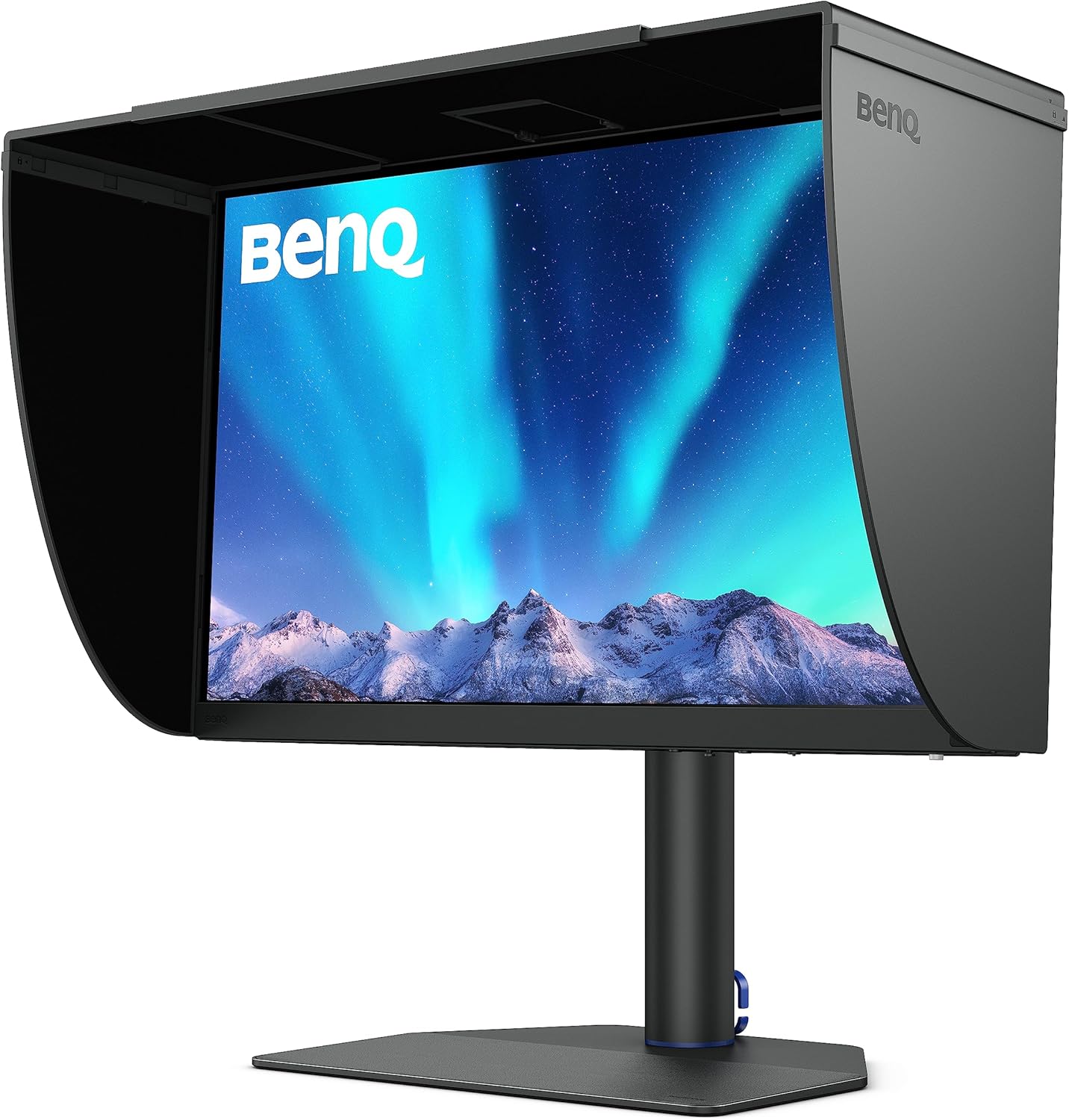Best Monitors for Color Grading a Podcast (Video Editing)
Color grading a podcast (especially one with video content for YouTube or similar) requires a color-accurate monitor that can faithfully display your footage. The ideal monitor should cover the key color spaces (like sRGB/Rec.709 for standard video, and possibly DCI-P3 for wider gamut content), have reliable factory calibration or calibration tools, and offer features that make editing comfortable (high resolution, good connectivity, etc.). Below we break down the top monitor options across entry-level, mid-range, and professional budgets, and explain the important factors – from panel type to HDR – to guide your choice.
Click here to learn more about the BenQ Monitor
Key Considerations for Color-Grading Monitors
Panel Type and Color Accuracy
- IPS panels: excellent color and wide viewing angles.
- OLED: infinite contrast, vibrant colors, but potential for burn-in.
- Mini-LED: high brightness, local dimming, good for HDR.
- VA: good contrast but narrower viewing angles.
Color Gamut Coverage and Calibration
- Aim for 100% sRGB / Rec.709 minimum.
- Wide gamut (DCI-P3, Adobe RGB) ideal for high-end work.
- Factory calibration (Delta E < 2) is a must.
- Hardware LUT and built-in calibrators for pro-level color.
Resolution and HDR
- 4K is preferred for accurate grading and sharp visuals.
- HDR support varies: DisplayHDR 400 is basic, 1000+ nits and local dimming are needed for true HDR work.
Connectivity and Ergonomics
- USB-C with Power Delivery simplifies laptop setups.
- Multiple inputs (HDMI, DisplayPort), daisy-chaining, KVM switches are useful.
- Adjustable stands and shading hoods help reduce fatigue and improve accuracy.
Comparison Table: Top Monitor Picks by User Level
| Monitor | Size & Res | Color Coverage | HDR | Key Features | Best For |
|---|---|---|---|---|---|
| ASUS ProArt PA279CRV | 27″ 4K | 100% sRGB, ~99% P3 | DisplayHDR 400 | Factory calibrated, USB-C (96W), Calman Verified | Beginner |
| Dell U2723QE | 27″ 4K | 100% sRGB, 98% P3 | DisplayHDR 400 | IPS Black, USB-C hub, KVM, Delta E < 2 | Enthusiast |
| ViewSonic VP2786-4K | 27″ 4K | 100% Rec.709, 98% P3 | HDR10 | Calman Verified, shading hood, ColorPro Wheel | Enthusiast |
| BenQ SW272U | 27″ 4K | 99% Adobe RGB, 99% P3 | HDR10 (SDR-focused) | 16-bit LUT, Hotkey Puck, Uniformity Tech | Professional |
| Eizo CG2700X | 27″ 4K | 99% Adobe RGB, 98% P3 | DisplayHDR 500 | Built-in calibrator, 16-bit LUT, USB-C PD | High-End Pro |
Final Thoughts
The best monitor for your podcast color grading workflow depends on your budget and goals:
- Beginner: ASUS ProArt PA279CRV offers incredible value with wide gamut and factory calibration.
- Enthusiast: Dell U2723QE or ViewSonic VP2786-4K are excellent choices with better contrast and creator-friendly tools.
- Professional: BenQ SW272U and Eizo CG2700X provide near-reference accuracy, uniformity, and long-term reliability.
No matter which you choose, regular calibration and good lighting will help ensure your podcast videos look professional and consistent. A good monitor is a foundation for video editing success.
🎬 Final Thoughts: Elevate Your Color Grading Setup
A high-quality monitor is the cornerstone of precise editing—and this guide helped you zero in on the ideal display for color-critical work. But even the best screen works best when paired with the right supporting gear.
Whether you’re grading video podcasts, YouTube content, or cinematic footage, your studio setup should be built to handle visuals and sound with equal care. Think color accuracy, but also recording clarity, editing speed, and proper lighting.
👉 Here’s what to consider next:
- 📸 Best Podcast Cameras — Use accurate visuals at the source to minimize color correction work later
- 🎤 Top Podcast Microphones — Clean audio is essential for any content that matches polished visuals
- 💡 Podcast Lighting Gear — Balanced lighting makes it easier to judge and adjust your footage in post
- 💻 Best Laptops & Desktops for Editing — Color grading is GPU-intensive. These machines are built for it
- 💾 Reliable Podcast Data Storage — Work with large video files? You’ll need fast and secure media storage
- Live Streaming Equipment — For creators who want to stream in real-time with accurate visuals
Color grading isn’t just about your monitor—it’s about your entire visual workflow. With the right tools in place, you’ll produce professional, calibrated content that looks great on any screen.
